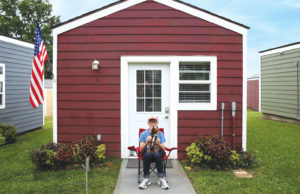WASHINGTON — Trying to spur enrollment in a key new
benefit of the 2010 health law, the Obama administration said Tuesday
that it’s slashing premiums for new high-risk insurance plans and no
longer requiring applicants to submit a rejection letter from private
insurers.
Since the plans were introduced in most states last
summer, enrollment has fallen far short of expectations; only about
18,000 people have signed up. The Congressional Budget Office had
estimated that as many as 4 million uninsured Americans would be
eligible and that 200,000 would be enrolled by 2013. The government set
aside $5 billion to fund the plans.
Twenty-seven states run their own plans; the federal
government operates them in 23 states and the District of Columbia. The
changes, which occur July 1, affect only federally run plans.
States that will see a 40 percent drop in premiums
are Alabama, Arizona, Delaware, Florida, Kentucky and Virginia. In other
states, premium reductions range from 2.1 percent in Mississippi to
38.3 percent in Minnesota.
In Florida, where 770 people have enrolled, a person
55 and over who subscribes to the so-called standard plan will see his
or her monthly premium for the standard plan fall by $150 to $376.
The plans are intended to serve as a bridge to help
people with medical conditions until insurance market overhauls required
by the law are implemented in 2014. At that time, insurers will no
longer be able to deny coverage or charge higher rates for people with
pre-existing conditions, a major benefit of the law.
To be eligible for the plans, applicants have to be uninsured for at least six months and have a pre-existing condition.
In the states where the plans are run by the federal
government, applicants will no longer have to prove they were denied
coverage by an insurance company. Instead, they can provide a doctor’s
letter stating that they have a medical condition. At least a dozen
state-run plans don’t ask for a denial letter from an insurer.
The premiums will drop as much as 40 percent in 17
states, plus the District of Columbia, where the federally administered
plans operates, the administration estimates. These decreases will help
bring premiums closer to the rates in each state’s individual insurance
market. In the six states where high-risk plan premiums were already
similar to what healthy people pay for individual plans, premiums will
remain the same.
To further generate interest in the plans, HHS this
fall will begin paying insurance agents and brokers for signing up
people for them.
“These changes will decrease costs and help insure more Americans,” said Health and Human Services Secretary Kathleen Sebelius.
———
(c)2011, Kaiser Health News.
Visit Kaiser Health News on the Web at http://www.kaiserhealthnews.org/
Distributed by McClatchy-Tribune Information Services.














